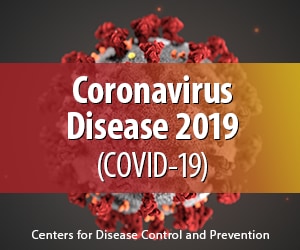
(INDIANAPOLIS, Ind.) -- People who attended a total solar eclipse event at a children's museum in Indiana may have been exposed to measles, according to museum and health officials.
An infected individual traveled to the event at the Children's Museum of Indianapolis on April 8 from out of state, the Marion County Public Health Department (MCPHD) said in a news release late Friday afternoon. Melissa McMasters, administrator of infectious disease and immunizations at the MCPHD, told ABC News the local county department was informed about the infected patient from the state Department of Health.
"Measles is one of those reportable diseases that's required to be reported by law because of the public health significance of it," she said.
No information will be made available about the patient including name, age, sex, race/ethnicity or what state they are from due to privacy laws, McMasters said.
Anyone who was exposed to measles, and is susceptible, would likely see symptoms before Monday, April 22, but symptoms could appear as late as April 29, according to the health department.
There were 3,527 people in attendance on April 8, the children's museum said, adding that it sent out emails notifying households in attendance that day for whom it had contact information, as well as notified all staff and volunteers.
The first symptoms of measles typically begin seven to 14 days after exposure and include fever, cough, a runny nose and red, watery eyes, according to the Centers for Disease Control and Prevention (CDC).
About two to three days later, tiny white spots, known as Koplik spots, may appear inside the mouth, the CDC says. Not long after that, a rash breaks out, usually beginning on the face -- at the hairline -- and spreading downward, according to the CDC.
Complications from measles can be relatively benign, such as rashes, or they can be much more severe, including viral sepsis, pneumonia or encephalitis, which is inflammation of the brain.
McMasters said the risk to the general public is low because most people are vaccinated against measles and no cases have been reported yet in the county. However, anyone who suspects they may have measles is advised to stay home and to call a health care provider immediately, she said.
"We take the health and safety of our visitors, staff, volunteers and community very seriously and are following the lead of the Indiana Department of Health and the Marion County Public Health Department," the children's museum said in a statement to ABC News.
"In support of their communication, we have also shared information regarding the possibility of a measles exposure with as many individuals as possible who were here on Monday, April 8, 2024. We urge anyone with questions or concerns to reach out to their local health department or a medical professional."
This comes amid a rapid increase in the number of measles cases during the first quarter of 2024, in part due to several localized outbreaks, including at a children's hospital and daycare center in Philadelphia, an elementary school in Florida and a migrant center in Chicago.
In February, the Indiana Department of Health confirmed the state's first measles case in five years in a Lake County resident who sought medical care at three Chicago hospitals, Chicago ABC station WLS reported.
Measles is a highly transmissible virus. It's so infectious that a measles patient could infect up to 90% of close contacts who are not immune, either through prior infection or vaccination, according to the CDC.
The CDC currently recommends that everyone receive two doses of the measles, mumps and rubella (MMR) vaccine, with the first dose between ages 12 and 15 months and the second dose between ages 4 and 6.
One dose of the measles vaccine is 93% effective at preventing infection if exposed to the virus, and two doses are 97% effective, according to the CDC.
"It's really upsetting that we're investing so much time and energy, money, resources into this when we know that if we have a highly vaccinated public, we won't be seeing these cases," McMasters said. "Yes, I've been in public health for 25 years, and it kind of feels like going backwards."
Copyright © 2024, ABC Audio. All rights reserved.





















